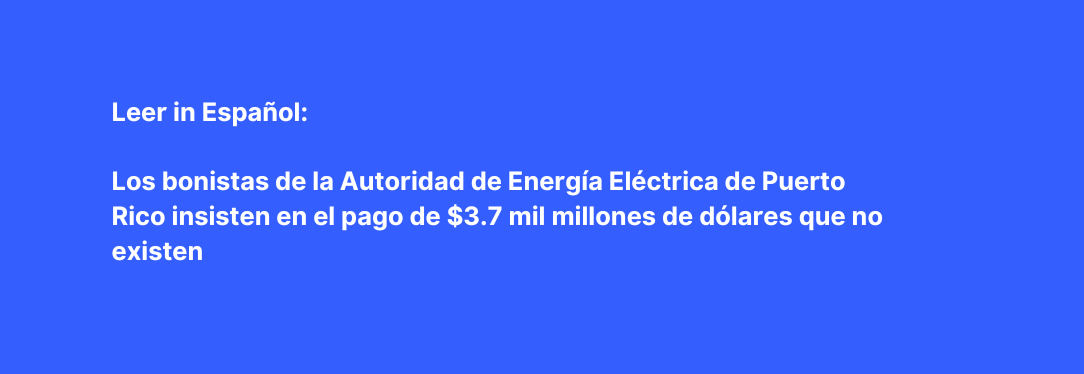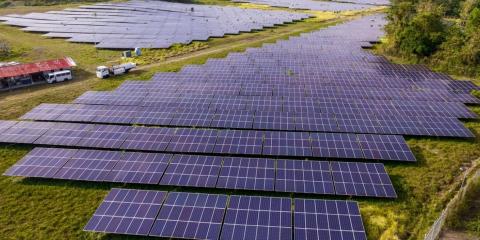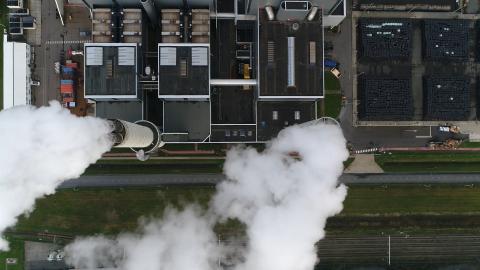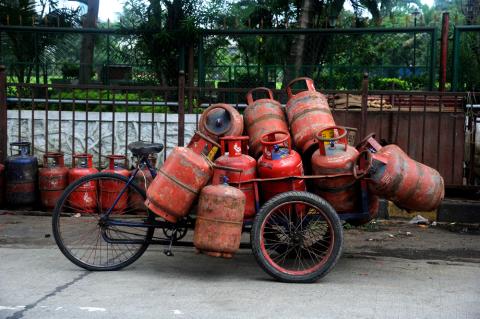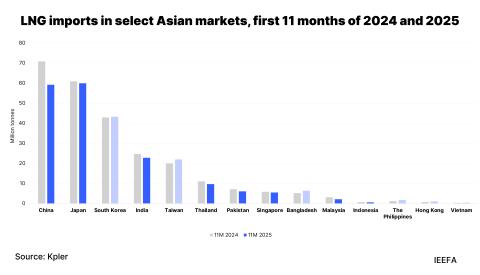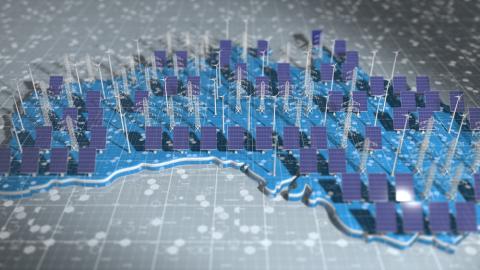Puerto Rico Electric Power Authority bondholders insist on being paid $3.7 billion that doesn’t exist
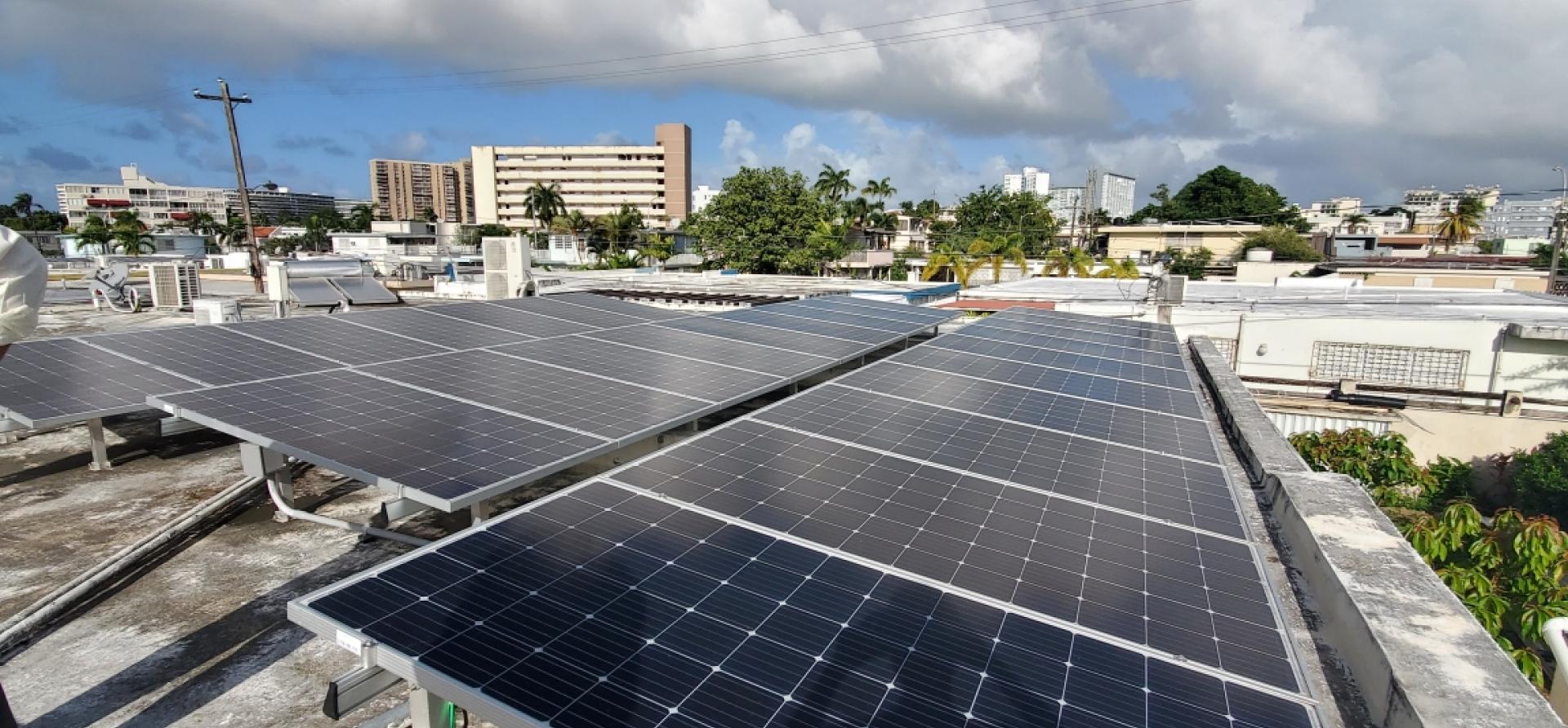
Key Findings
Despite the urgent need to restore the Puerto Rico electrical system to sound operating condition, bondholders are arguing that PREPA should prioritize paying them $3.7 billion in cash.
Forcing PREPA to produce $3.7 billion in cash would require tapping into central government funds, raising electric rates and/or diverting funds meant for urgent grid repairs.
Puerto Rico’s electrical system has failed to resolve underlying problems that drove it to physical and financial ruin and the system remains fossil fuel dependent and unable to balance its budget.
The bondholders ignore the fact that a functional electrical system is necessary for a functional economy in Puerto Rico.
Puerto Rico’s electrical system is in worse physical condition than it was prior to Hurricane Maria. Despite the urgent need to restore the system to sound operating condition, bondholders are arguing that the Puerto Rico Electric Power Authority (PREPA) should prioritize paying them $3.7 billion in cash that the electrical system simply doesn’t have.
The most recent PREPA fiscal plan, produced by the Financial Oversight and Management Board (FOMB) for Puerto Rico, points out that not only are PREPA’s reliability metrics 8 to 13 times worse than the median U.S. utility, but these metrics have been worsening since March 2023. Grid operator LUMA Energy is forecasting nearly a tripling of load shedding events this summer due to the instability of the generation system.
The electrical system is in dire financial condition as well. The system has experienced negative cash flows for 36 of the last 49 months and, if not for periodic transfers from the Commonwealth government, would already have run out of cash. The Puerto Rico Energy Bureau is currently conducting an investigation into the system’s liquidity crisis.
Motivated by the unreliability of the grid, Puerto Rico residents continue to move rapidly to rooftop solar, with nearly 22 megawatts (MW) installed per month over the last year. Instead of fostering a transition to a decentralized, resilient system, the Puerto Rico government has decided to double down on natural gas. The government has signed a contract for a new 450MW natural gas plant and recently announced a request for proposal for an additional 2,500-3,000 MW of baseload capacity (presumably natural gas, since coal is outlawed after 2032). If successful, this effort will keep the island locked into volatile and likely rising LNG prices for the next several decades.
In short, Puerto Rico’s electrical system has failed to resolve core underlying problems that drove it to physical and financial ruin. The system remains highly fossil fuel dependent and unable to balance its budget.
Yet bondholders in the PREPA bankruptcy case are now arguing that the electrical system needs to pay them “no less than $3.7 billion” in cash. This group of bondholders, led by GoldenTree Asset Management, are arguing that since PREPA entered bankruptcy in 2017 the system has accumulated that amount in net revenues (according to unaudited financial reports). The bondholders argue that, according to the Trust Agreement that governed the issuance of PREPA bonds, this money should have been set aside as collateral to pay the bonds and they are therefore entitled to it.
This money simply does not exist. PREPA’s bank account balances total only $1.45 billion, of which more than $1 billion are federal funds designated for grid reconstruction. Forcing PREPA to produce $3.7 billion in cash would require tapping into central government funds, raising electric rates and/or diverting funds meant for urgent grid repairs. It would represent a major setback to efforts to restore the electrical system to stable fiscal and physical condition.
A functional electrical system is necessary for a functional economy in Puerto Rico. The bondholders’ short-term thinking ignores the fact that restoring the electrical system to fiscal solvency and sound operating condition is essential to Puerto Rico’s economic stability and, by extension, sustained future access to bond markets.

